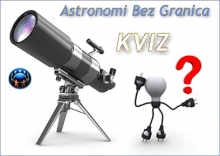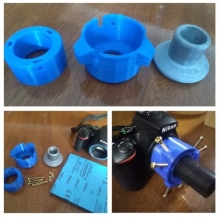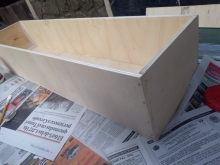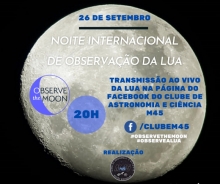For billions of years, life has relied on Earth’s day-night rhythm to govern life-sustaining behaviors. It’s encoded in the DNA of all plants and animals. Humans have radically disrupted this cycle by lighting up the night. Research shows that artificial light at night has negative and deadly effects on many species.
5. Sea Turtles

Sea turtles live in the ocean but hatch on the beach at night. Hatchlings find their way to the sea by detecting the bright horizon over the ocean. Artificial lights can draw them away from the sea, stranding them on land where they’re vulnerable to dehydration, predators, and cars. In Florida alone, millions of hatchlings die this way every year. Photo credit: Deejee. (CC)
4. Fireflies

These magical creatures have been disappearing across the globe. Scientists agree that the loss of habitat and light pollution are partly to blame. Studies have shown that artificial light interferes with the light male fireflies create to attract their mates - meaning less fireflies are born each year. Chances are if it is too bright to see many stars, you won't be seeing any fireflies either. Photo credit: s58y (CC).
3. Atlantic Salmon

Artificial light can change the natural migration patterns of salmon. Researchers compared the migration of young Atlantic salmon under natural light conditions with those under artificial street lighting. Under natural light, the salmon’s migration correlated with sunset. Under street lighting, their migration was random. The researchers concluded that the disruption of salmon’s migratory behavior could threaten their chances of survival. Photo credit: U.S. Fish & Wildlife Service Northeast Region (CC).
2. Tree Frogs

Frog populations worldwide are in decline due to a variety of environmental stressors. As many frog species are nocturnal, they are especially susceptible to harm from light pollution. Scientists have also discovered that artificial light influences the mating call of many species of tree frogs. In areas that are highly lit, male tree frogs stop or lessen their mating call. And if the males aren’t calling, the females aren’t reproducing. Photo credit: Hunter Desportes (CC).
1. Monarch Butterflies

The monarch is the only butterfly known to make a two-way migration like birds. They use a sophisticated navigation system to guide them in their journey south for the winter. Research has shown that that exposure to artificial light can disrupt their navigation system, disorienting them from their migration routes. Photo credit: Ted (CC).
The good news is you can help protect wildlife!
- Make sure your lighting is shielded so lights shine down and not up
- Use energy saving features like timers, dimmers and motion detectors
- Talk to your neighbors about good lighting
- Become a member of the International Dark-Sky Association.
 Cheryl Ann is IDA’s Communications and Public Affairs Director. She’s an outdoor enthusiast regardless of whether it is day or night. Growing up in rural Washington state, she learned to appreciate night skies at an early age. Before joining IDA, she received graduate degrees in mass communication and then taught college communication courses. Prior to her graduate studies, she worked in public relations for state and municipal agencies. Cheryl Ann has published numerous freelance articles, chapters, and a book. She’s excited that she gets to use her writing and communication skills for such a great cause. In her free time Cheryl Ann loves to explore the beautiful Sonoran Desert (Ariz.), garden, play music and take pictures.
Cheryl Ann is IDA’s Communications and Public Affairs Director. She’s an outdoor enthusiast regardless of whether it is day or night. Growing up in rural Washington state, she learned to appreciate night skies at an early age. Before joining IDA, she received graduate degrees in mass communication and then taught college communication courses. Prior to her graduate studies, she worked in public relations for state and municipal agencies. Cheryl Ann has published numerous freelance articles, chapters, and a book. She’s excited that she gets to use her writing and communication skills for such a great cause. In her free time Cheryl Ann loves to explore the beautiful Sonoran Desert (Ariz.), garden, play music and take pictures.





























